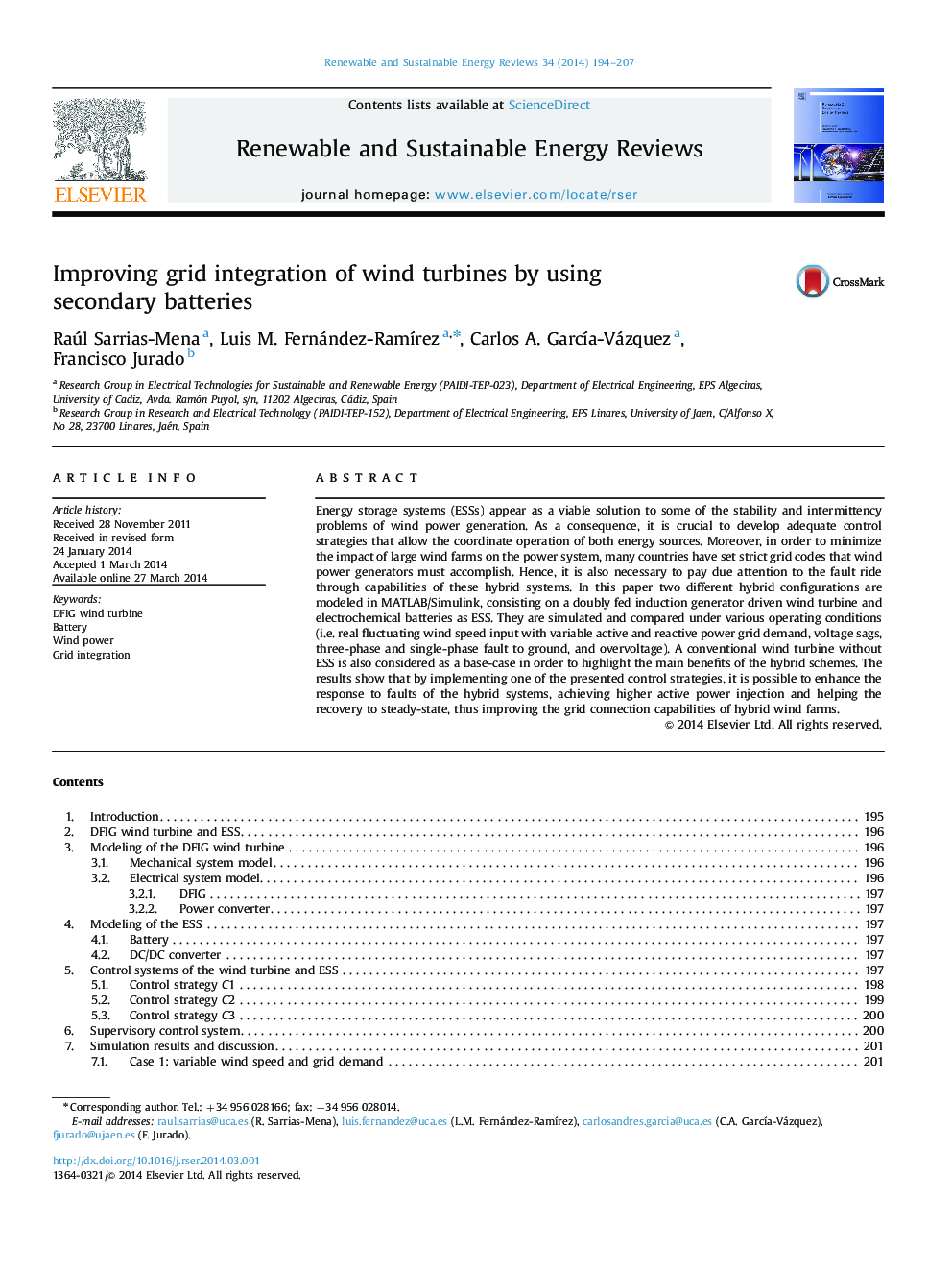| Article ID | Journal | Published Year | Pages | File Type |
|---|---|---|---|---|
| 8119953 | Renewable and Sustainable Energy Reviews | 2014 | 14 Pages |
Abstract
Energy storage systems (ESSs) appear as a viable solution to some of the stability and intermittency problems of wind power generation. As a consequence, it is crucial to develop adequate control strategies that allow the coordinate operation of both energy sources. Moreover, in order to minimize the impact of large wind farms on the power system, many countries have set strict grid codes that wind power generators must accomplish. Hence, it is also necessary to pay due attention to the fault ride through capabilities of these hybrid systems. In this paper two different hybrid configurations are modeled in MATLAB/Simulink, consisting on a doubly fed induction generator driven wind turbine and electrochemical batteries as ESS. They are simulated and compared under various operating conditions (i.e. real fluctuating wind speed input with variable active and reactive power grid demand, voltage sags, three-phase and single-phase fault to ground, and overvoltage). A conventional wind turbine without ESS is also considered as a base-case in order to highlight the main benefits of the hybrid schemes. The results show that by implementing one of the presented control strategies, it is possible to enhance the response to faults of the hybrid systems, achieving higher active power injection and helping the recovery to steady-state, thus improving the grid connection capabilities of hybrid wind farms.
Keywords
Related Topics
Physical Sciences and Engineering
Energy
Renewable Energy, Sustainability and the Environment
Authors
Raúl Sarrias-Mena, Luis M. Fernández-RamÃrez, Carlos A. GarcÃa-Vázquez, Francisco Jurado,
